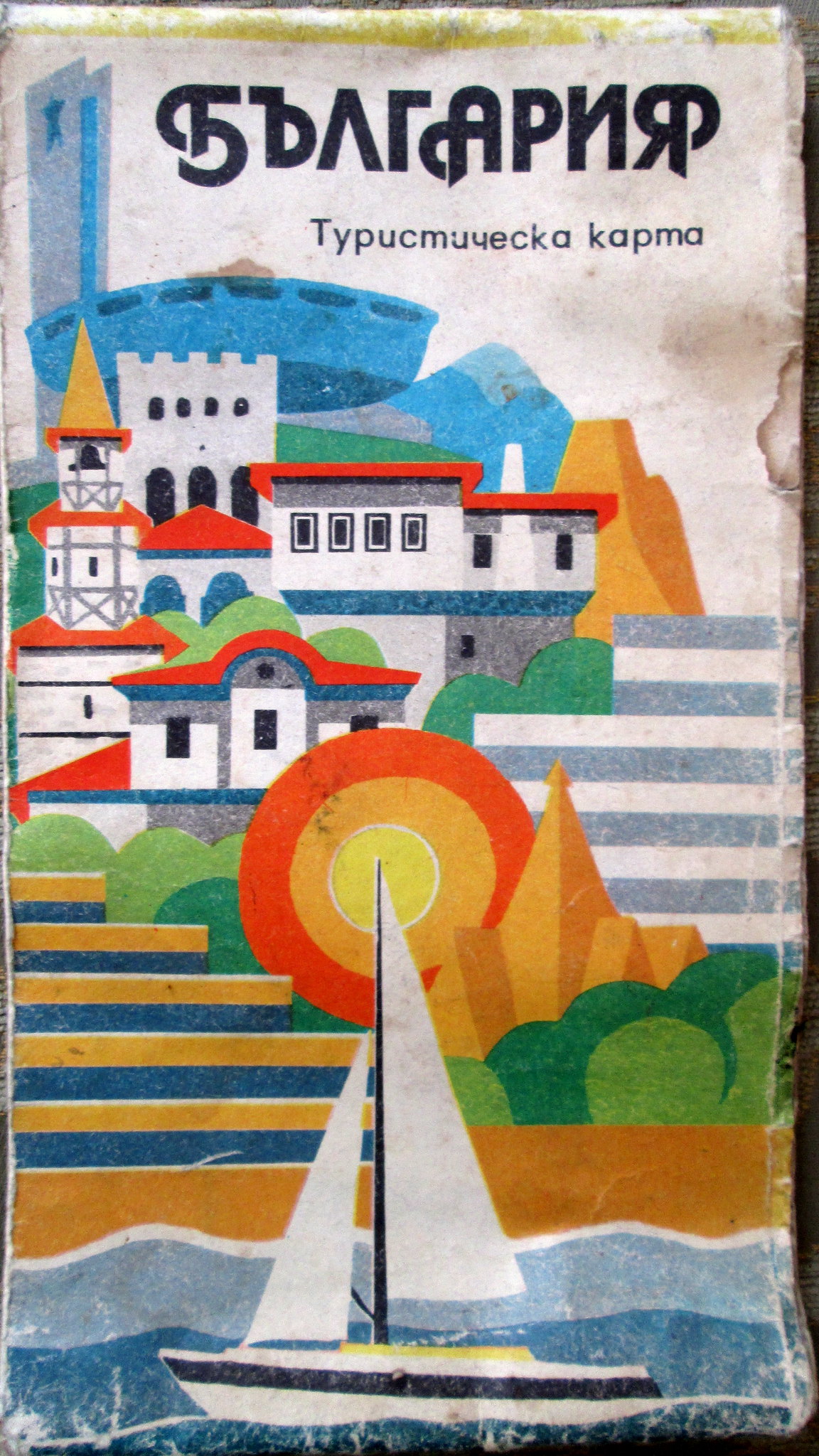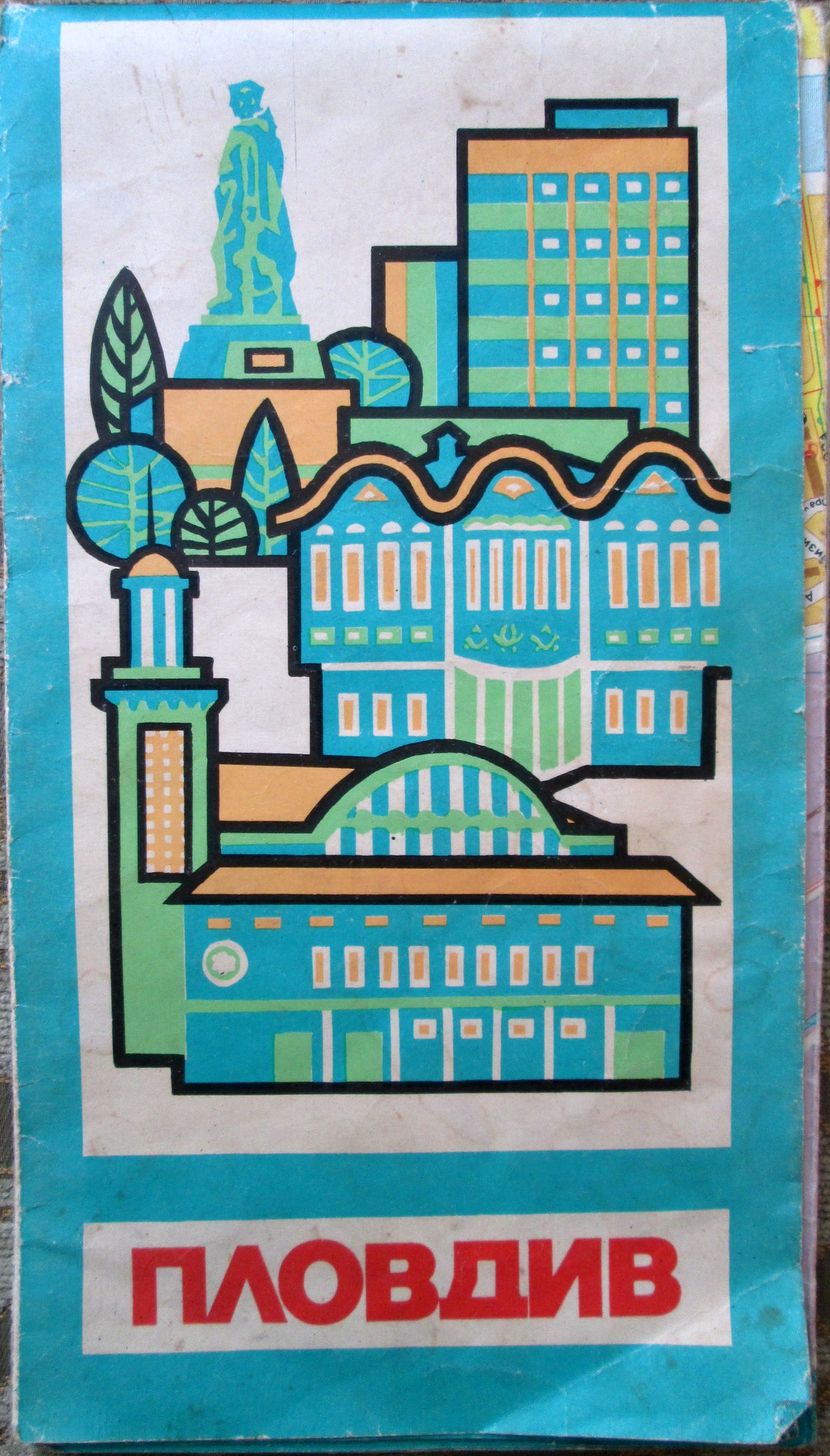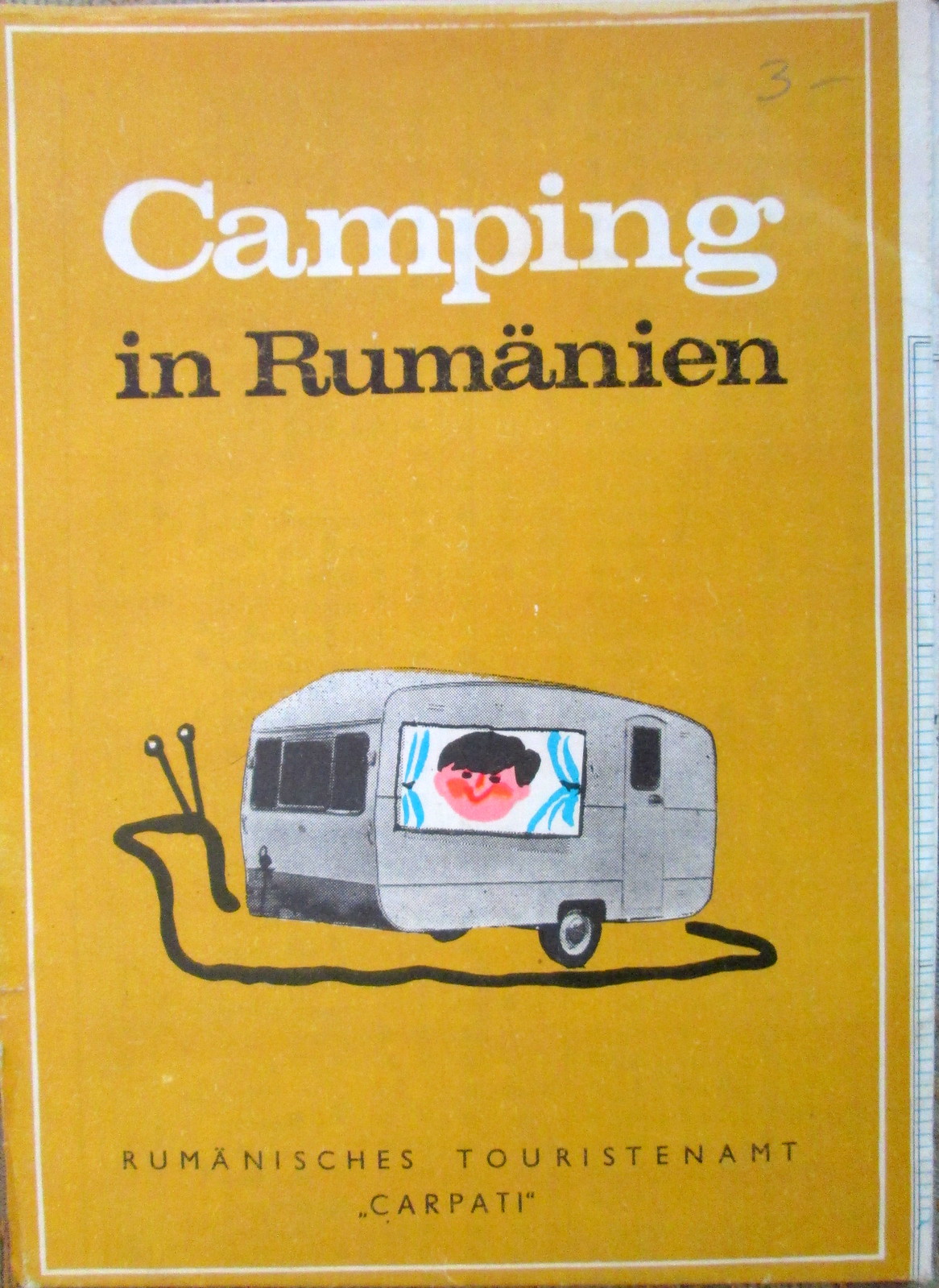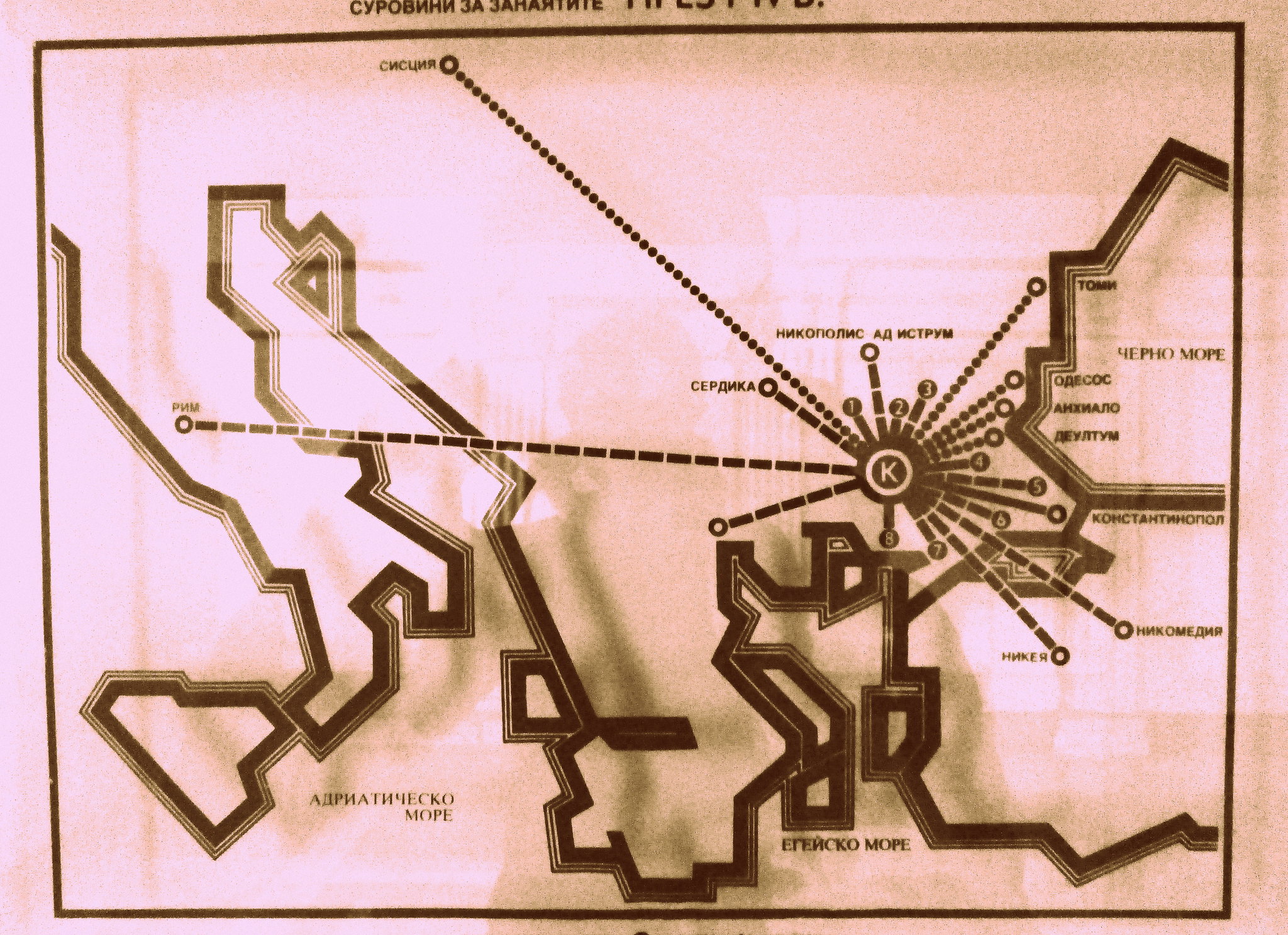Nick Danforth, Georgetown University
The second installment of Afternoon Map's Bulgaria week, this time featuring some amazing 1980s imagery. The first four images are covers of tourist maps from the era, about which we have little to say other than that they really are amazing. The map cover on the left shows the full range of attractions available in Bulgaria, from sailing on the Black Sea to visiting quaint Ottoman-era houses to seeing the giant Communist monument at Buzluca. By Car Through Bulgaria includes useful information for the traveler, including the fact that a 12% reduction is granted to those who buy gasoline scrips in hard currency (these can be obtained at the frontier checkpoints, at the Central Council of the Bulgarian Automobile and Touring Club and at the Balkantourist offices in larger towns and resorts). Also free medical care is given in all emergency cases until the patient's life is out of danger. The next image is of the city of Plovdiv, as pleasant a place now as it appears on the map cover. Finally, a German map of Romania from the same era, for East German citizens looking for a camping vacation in one of the nearby countries they were allowed to travel to.
This next pair of maps are from the regional history museum in the city of Kardjali, housed in a building originally designed in the 1930s to be Bulgaria's main madrasa. They seem to show something about the spread of Thracian cultural influence in the ancient world, but we're showing them here for their elegantly square rendering of the Eastern Mediterranean region.
Finally, it's impossible to write about 1980s Bulgarian maps without including another photo from the Karacali museum of the two most impressive looking explorers I've ever seen: Kaptan Georgi Georgiev and Kosmonaut Georgi Ivanov, 1979. As best I could tell, Georgiev (left) circumnavigated the globe on his yacht. Ivanov, of course, was "launched into space as part of the Soyuz 33 mission from Baikonur Cosmodrome on April 10, 1979, at 17:34 (GMT).Though take-off was smooth, the mission was a disaster, with severe damage of the engine preventing docking in orbit to Salyut 6 orbital station as it was initially planned. A premature return to Earth became the only possible decision for Ivanov and Rukavishnikov. Due to some additional technical problems landing was difficult to endure-more than 9Gs. When Soyuz 33 finally landed, it was 320 km southeast of Dzhezkazgan. It completed 31 orbits, and was in space for 1 day, 23 hours and 1 minute."











